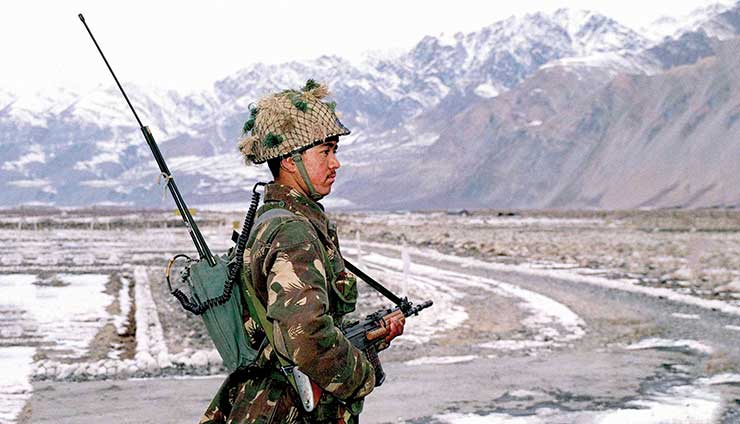
The Indian soldier has proved himself time and again from historical times to World Wars I & II and the post-Independence wars fought both on the northern and the western fronts, and most victories have been on the shoulders of gallant and brave young soldiers and leadership of Junior Officers. Future conflicts are going to be much more demanding in terms of strategic leadership, the soldier and the technology with which you go to the battle. A simple analysis indicates that we are badly in need of a transformation to meet the threats of the future from a position of strength. Major issues that need to be understood and addressed are Bulleted further.
• HR – Training, Organisation
• Higher Military Leadership
• Technology and Weapons
• Military Civil Relations
• HR – Specialisation, Organisation
The man behind the gun remains the most important element; we need to start with officers first – specialisation is a non-negotiable requirement; the Army needs to set up specialised verticals to address the technology space as well as logistic and administrative experts to deliver bang for the buck.
Given the changing way conflicts are going to be conducted based on high tech resources and a much better logistics support available within the country, reorganisation is needed to optimise the available manpower right from the Infantry Battalions to the logistic units; higher defence organisations for synergising the combat power of the three services need to be made effective operationally – this was achieved in the US by an act of the Congress and if required an act of the Parliament must be enacted to implement the reorganisation of higher defence institutions so as NOT to meet the aspirations of the Services, but to be operationally effective.
Higher Military Leadership
Understanding and having the ability to manoeuvre in the BIG PICTURE space is a critical capability needed to be developed at the National level. Measures to develop a strong, ethical, and professional higher military leadership need to be put in place through training, HR policies, and organisational culture.
Technology and Weapons
The most innovative and effective use of technology has been seen in the last 20-30 years of conflict over the world both by state and non-state players – to produce shock and awe and achieve military objectives most efficiently.
In our context the use of technology in conflicts and absorption of technology in operational processes, weaponry, and decision making has been achieved to the levels of having a façade – No Further. This major void needs to be addressed by the way of procurement and training at all levels.
Procurement of weapons is best conveyed through the media as DAC decisions – FULL STOP. Basic weapons such as the personal weapons of a soldier are no match for what is easily even available to an insurgent in the NE. A Mind-shift towards defence expenditure is necessary; combined with a drive towards indigenous manufacturing capability – the contribution of defence expenditure to the economy must be understood – it would create jobs, rev up the economy, etc. The military-industrial complex in the US would be a good model to understand the methodology of development, yet an INDIAN Methodology would need to be evolved as currently none of the policies/initiatives has fructified anything worthwhile on the ground.
Military-Civil Relations
Civilian supremacy has been a given in our context but functional issues such as parity of ranks, pay & allowances, functional working with the bureaucracy etc have been strong irritants affecting the growth of the military power of the country. Also importantly, while the major decisions (or the lack of it) come from the bureaucracy there is no responsibility attached – necessitating a relook at the way the defence of the country is administered.
With the ongoing geopolitical situation – an unstable Pakistan and Afghanistan, and China flexing its muscles – the transformation should have come yesterday.
While the article has just BULLETED the issues, it would require a team with a very professional approach led by a capable leadership to manifest the contours of the transformation.
– The author is an analyst with interest in matters related to military and military space domain. The views expressed are personal and do not necessarily reflect the views of Raksha Anirveda








